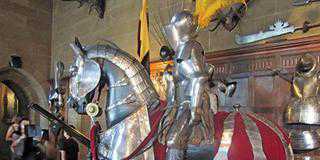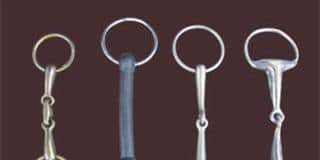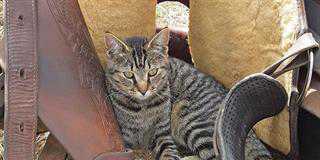The bigger horse shows in SA involve up to 300 horses. It becomes quite difficult to manage your own horses under such conditions. Often they’ll be subjected to lighting in the stables, and many react by kicking at the walls and doors or whinnying all night. Warm-up arenas and lunging rings, meanwhile, are fully booked and there’s seldom time in the busy class schedule to allow for warming up in the actual arena.
Arrival
When you arrive at the show with a truck loaded with feed, tack and blankets towing a horse box, you should already have found out where your stables are so that you can offload as close as possible. Hay bales are heavy to cart around and, on the first day, organisers will usually allow you to park close to your stables. Once offloaded, the horse box and truck will be moved to the designated parking area, which may be more than a kilometre away from where your horses are stabled.
Make sure you have a tack room booked for feed storage. It’s not a good idea to leave your hay bales stacked in the corridor outside your stables, as passing horses can graze on them. Their saliva could contain diseases such as strangles (equine distemper) and equine viral arteritis, which could infect your horses when you put the hay in their nets.
Before offloading, clean out the stables – there’s often manure from previous occupants, ticks and insects – and the feed mangers, as these can contain everything from rotten food and dead rats or birds, to bees and spiders. Bedding is often on sale at the show, and you’ll need at least two bales of straw or two large bags of shavings per stable. Spread these out and fill the water buckets. (You’ll need to bring these with you as they’re not generally supplied.)
Settled
Get all of this done as soon as possible and get your horses to the stables. Remove their travelling boots and blankets only once they’re settled. Keeping your horses out in the open while removing their rugs and boots can be dangerous. The hay nets should be put up as soon as horses are stabled, as they stress less when they have hay to eat. If they’re very agitated
in the stalls to start with, open the front and hang the teff net outside the stable so they can see other horses eating at the same time.
Exercising
It’s crucial to find out where you’re allowed to warm up your horse. For instance, warming up in a dressage arena can lead to disqualification. At some shows, you’re allowed to warm up in the arena at certain times. This is a good idea as it allows the competition horses to get used to the unusual sounds and shadows of an indoor venue. Often there are a few lunging rings, and it’s a good idea to teach your horse to lunge in an open arena. This is usually done early in the morning, before the classes start.
It’s a good idea to have a very specific warm-up programme for your horse. Walk-out or lunge early in the morning, simultaneously cleaning out the stable and turning over bedding if there are enough ‘hands’. After this, wash the horses, if needed, or groom them thoroughly and plait them up if that’s required. Most show venues have wash bays with taps. Remember to pack a hosepipe and several different tap connections, as most showgrounds don’t provide hoses. Take your own shampoo and conditioner as well.
Sweat
A ridden warm-up should also be fitted in sometime during the day if there’s not a class, preferably lasting at least 30 to 40 minutes. If there is a class or classes to be ridden, horses should be warmed up for at least 10 to 20 minutes just before going into the ring. In the US, Quarter Horses are generally only considered fit to go into the ring when there’s a little bit of sweat under the saddle blanket.
Contact Dr Mac at [email protected]. Please state ‘Horse talk’ in the subject line of your email.













